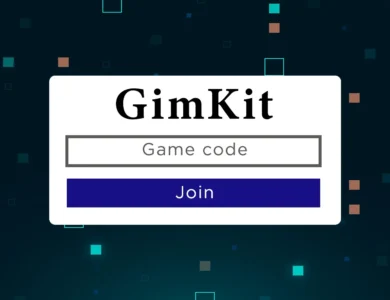Crafting a Luxurious Website: Emulating Luxly.com’s Style

Table of Contents
Introduction
In the digital age, a website serves as the virtual storefront of a brand. For luxury brands, the online presence must reflect sophistication, exclusivity, and elegance. Emulating the design aesthetics of websites like Luxly.com can provide invaluable insights into creating a high-end user experience. This article delves into the core elements that define a luxurious website, offering actionable strategies to help you craft a site that resonates with opulence and refinement.
Minimalist Design with Maximum Impact
Luxury websites often embrace a minimalist design philosophy, focusing on simplicity and elegance. By reducing clutter and emphasizing essential elements, the design allows the content to shine. This approach not only enhances the aesthetic appeal but also improves user experience by making navigation intuitive and straightforward.
Key Strategies:
- Whitespace Utilization: Generous use of whitespace ensures that each element has room to breathe, contributing to a clean and organized layout.
- Typography: Opt for classic, serif fonts that convey sophistication. Ensure consistency in font usage across the site to maintain a cohesive look.
- Color Palette: Stick to a neutral color scheme with accents of gold, silver, or deep hues to evoke a sense of luxury.
High-Quality Imagery
Visuals play a pivotal role in conveying the essence of luxury. High-resolution images that showcase products or services in their best light can significantly enhance the perceived value of a brand.
Implementation Tips:
- Professional Photography: Invest in professional photography to capture products in elegant settings.
- Lifestyle Images: Incorporate images that depict the lifestyle associated with your brand, helping users envision themselves in that world.
- Consistent Style: Maintain a consistent photographic style throughout the website to ensure visual harmony.
Seamless Navigation
An intuitive navigation system is crucial for providing a smooth user experience. Users should be able to find information effortlessly without feeling overwhelmed.
Best Practices:
- Simplified Menu: Limit the number of menu items to the essentials, categorizing content logically.
- Sticky Navigation: Implement sticky navigation bars that remain visible as users scroll, ensuring easy access to different sections.
- Breadcrumbs: Use breadcrumb trails to help users understand their location within the site and easily backtrack if needed.
Exclusive Content and Gated Areas
Creating exclusive content or members-only areas can enhance the sense of exclusivity and privilege associated with luxury brands.
Execution Ideas:
- VIP Access: Offer early access to new products or services for registered members.
- Premium Content: Provide high-quality content such as behind-the-scenes videos, interviews, or expert insights that are accessible only to members.
- Personalized Experiences: Utilize user data to offer personalized recommendations or content, making users feel valued and understood.
Fast Load Times and Mobile Optimization
In the luxury market, users expect a seamless and efficient online experience. Slow load times or poorly optimized mobile sites can detract from the brand’s image.
Optimization Tips:
- Image Compression: Compress images without compromising quality to reduce load times.
- Responsive Design: Ensure the website is fully responsive, providing an optimal viewing experience across all devices.
- Performance Testing: Regularly test the website’s performance using tools like Google PageSpeed Insights and make necessary adjustments.
Storytelling Through Content
Luxury brands often use storytelling to connect with their audience on an emotional level. Narratives that highlight the brand’s heritage, craftsmanship, or values can create a deeper bond with users.
Content Strategies:
- About Us Page: Craft a compelling story about the brand’s origins, mission, and vision.
- Blog: Maintain a blog that shares insights into the brand’s processes, collaborations, or industry trends.
- Customer Stories: Feature testimonials or stories from satisfied customers to build trust and credibility.
Secure and Elegant E-Commerce Experience
For luxury brands selling products online, the e-commerce experience should be as refined as the products themselves.
E-Commerce Enhancements:
- Secure Payment Gateways: Offer multiple secure payment options to build trust with customers.
- Detailed Product Pages: Provide comprehensive product descriptions, high-quality images, and customer reviews.
- Easy Checkout Process: Streamline the checkout process to minimize friction and cart abandonment.
Personalized User Experience
Personalization can make users feel special and valued, enhancing their overall experience with the brand.
Personalization Techniques:
- User Profiles: Allow users to create profiles to receive personalized recommendations and content.
- Behavior Tracking: Track user behavior to offer tailored suggestions or promotions.
- Customized Communication: Send personalized emails or messages based on user preferences and interactions.
Integration of Social Proof
Displaying social proof can enhance credibility and influence purchasing decisions.
Social Proof Elements:
- Testimonials: Feature testimonials from satisfied customers or industry experts.
- Media Mentions: Showcase any media coverage or awards the brand has received.
- User-Generated Content: Encourage customers to share their experiences on social media and feature their content on the website.
Continuous Improvement and Feedback
The digital landscape is ever-evolving, and luxury brands must adapt to stay relevant. Regularly gathering user feedback and analyzing website performance can provide insights for continuous improvement.
Improvement Strategies:
- User Surveys: Conduct surveys to gather feedback on user experience and satisfaction.
- Analytics: Utilize analytics tools to monitor website performance and identify areas for improvement.
- A/B Testing: Implement A/B testing to determine the most effective design elements and strategies.
Read More: 5StarsStocks.com Review: AI-Driven Stock Picks
Conclusion
Crafting a luxurious website involves more than just aesthetic appeal; it requires a deep understanding of user expectations and behaviors. By focusing on minimalist design, high-quality visuals, seamless navigation, and personalized experiences, brands can create an online presence that reflects sophistication and exclusivity. Emulating the design elements of websites like Luxly.com can serve as a valuable blueprint for building a high-end digital experience that resonates with discerning consumers.
FAQs
- What are the key elements of a luxury website design?
Key elements include minimalist design, high-quality imagery, seamless navigation, exclusive content, fast load times, mobile optimization, storytelling, secure e-commerce, personalized user experience, social proof, and continuous improvement. - How can I make my website look more luxurious?
Focus on a clean and elegant design, use high-resolution images, ensure fast load times, and provide an intuitive user experience. Incorporate elements that reflect the exclusivity and sophistication of your brand. - Why is storytelling important in luxury website design?
Storytelling helps to connect with users on an emotional level, conveying the brand’s heritage, values, and craftsmanship. It creates a deeper bond with the audience and enhances brand loyalty. - How can I personalize the user experience on my website?
Allow users to create profiles, track their behavior to offer tailored suggestions, and send personalized communications based on their preferences and interactions. - What role does social proof play in luxury website design?
Social proof enhances credibility and influences purchasing decisions. Displaying testimonials, media mentions, and user-generated content can build trust and encourage conversions.



